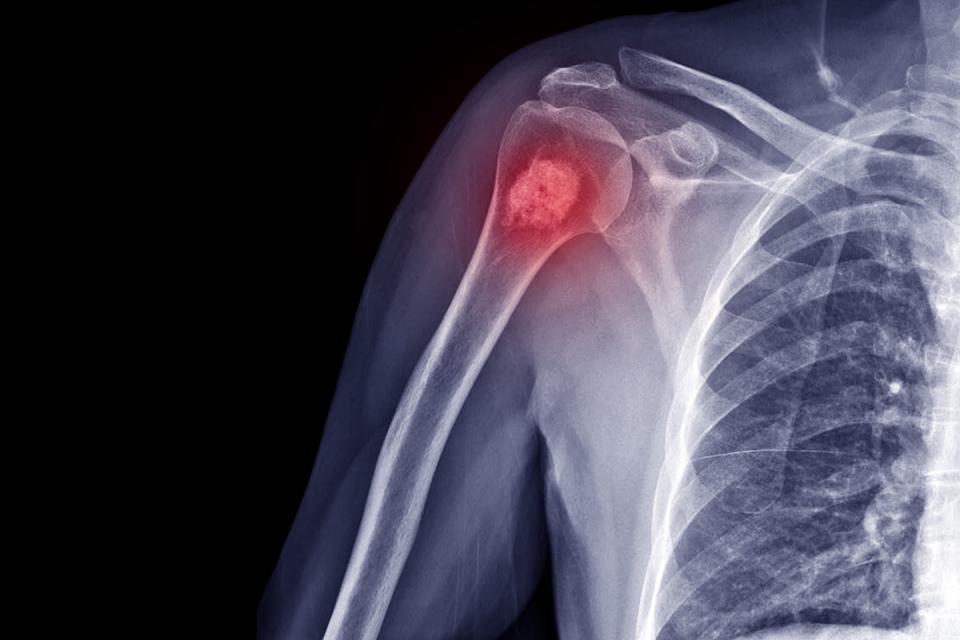Sarcoma: Cancer of the soft tissue or bone
Another kind of orthopedic cancer is soft tissue sarcoma. This can develop in soft tissues around the body like muscle, fat, blood vessels, nerves, fibrous tissues or deep skin tissues.
“Soft tissue sarcomas are very rare,” explains Dr. Seidel. “There are only about 2,500 diagnosed each year in this country compared to the several million cases of breast cancer or prostate cancer diagnosed every year. Because we are a clinic focused on this type of tumor, they are relatively common in our practice.”
In general, soft tissue tumors need to be removed surgically and treated with radiation either before or after surgery. Occasionally, or if the tumor has spread, they will also be treated with chemotherapy.
Sarcoma can also occur in the bone.
“Sarcoma in the bone is even more rare than the soft tissue sarcomas, and approximately 1,200 primary bone sarcomas are diagnosed every year,” Dr. Seidel says.
Osteosarcoma, a cancer of the bone, is generally diagnosed during the second decade of life. Chondrosarcoma is a different cancer that originates in the bone but is made of cancerous cartilage cells. This type of cancer is generally diagnosed later in life when patients are in their 50s or 60s.
“Both of these require surgical resection of the bone, and because they often occur very close to a joint, we generally either perform a knee replacement or a hip replacement when removing these.”
In most cases, these rare orthopedic cancers do not have any direct cause. In some very rare circumstances, they can be related to a genetic mutation. In a few patients, soft tissue sarcomas are secondary to radiation exposure. Most soft tissue and bone sarcomas are well described as sporadic, meaning there was a genetic mutation that occurred in one area of a patient's body not related to an overall genetic problem.
Partnering on diagnosis and treatment
Since many orthopedic cancers are secondary, a lot of patients who come see Dr. Cummings and Dr. Seidel are already undergoing cancer treatment for their primary cancer.
“When someone has a cancer like that, it really does require a multidisciplinary approach to treatment,” explains Dr. Cummings.
Our orthopedic oncologists work in collaboration with a patient’s entire care team, and any specialists who may be providing them care, to provide the best outcomes possible.
Since most orthopedic cancers require surgery, an orthopedic oncologist has expertise both in treating cancer and in orthopedic surgical care and is uniquely qualified to help minimize damage to the bone and help people maintain their ability to walk and engage in weight-bearing activities.
“We help ensure that patients don’t lose function when they’re dealing with cancer that has spread to the bone,” notes Dr. Cummings, who also specializes in adult joint reconstruction surgery.
Finding inspiration
Dr. Cummings enjoys the moments when he gets to let patients know that what they thought was cancer actually isn’t. Of course, that’s not always the case, and he and Dr. Seidel often help walk patients through their cancer journey.
“The way we look at it is we have an opportunity to help people through a really difficult time in their lives,” Dr. Cummings says. “I’m often inspired by the courage we see in the way people battle and fight. I think we are benefitted as much or possibly more from treating these patients than the other way around.”



